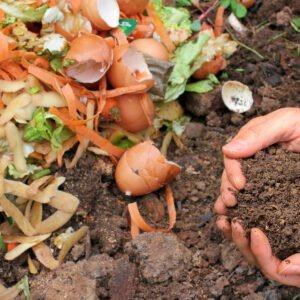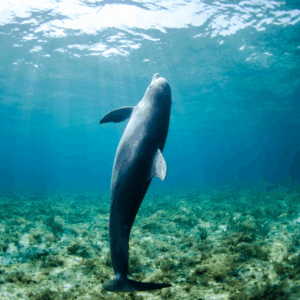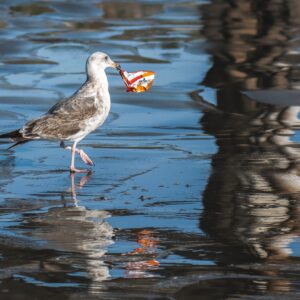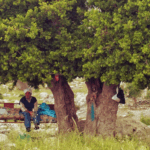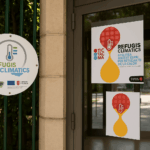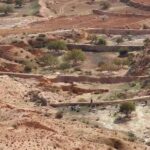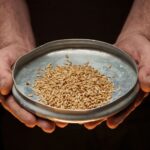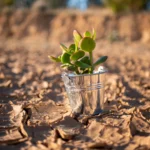Jump fishing, commonly known as “damessa”, is a fixed fishing technique specific to the Attaya region of Kerkennah. Today, this technique has been abandoned by the majority of fishermen and is in danger of disappearing.
Kerkennah: the hoop of traditional fishing in danger
Away from the hustle and bustle of the big cities, some twenty kilometers off the east coast of Sfax, lies the Kerkennah archipelago. This picturesque sanctuary is a haven of peace where serenity and authenticity mingle. Covering an area of 157 km², it comprises two main islands, Gharbi and Chargui, the latter surrounded by a myriad of smaller islets.
Kerkennah, a witness to history, has witnessed a mosaic of civilizations – from the Libyks to the Amazighs, from the Phoenicians to the Carthaginians, followed by the Romans, Byzantines and Arab-Muslims. These peoples have all left an indelible mark, shaping a rich and varied heritage that is still reflected today.
Like many islands around the world, Kerkennah is deeply rooted in fishing, the mainstay of its local economy. This vital sector directly employs 32% of the local population, and indirectly supports a large proportion of the population through related activities such as the manufacture of fishing equipment, catering, handicrafts, industry and tourism.
Fishing in Kerkennah, mainly inshore, is adapted to a singular marine environment, characterized by vast shoals stretching for kilometers, with depths barely exceeding three meters. The local people have developed traditional fishing techniques, in perfect harmony with their environment. These include“Charfia“, listed as a UNESCO intangible cultural heritage site in 2020, as well as various traps (the“karour” gargoulettes and the“drina” nasses) and “Damassa” fishing, an ancestral method now on the verge of extinction.
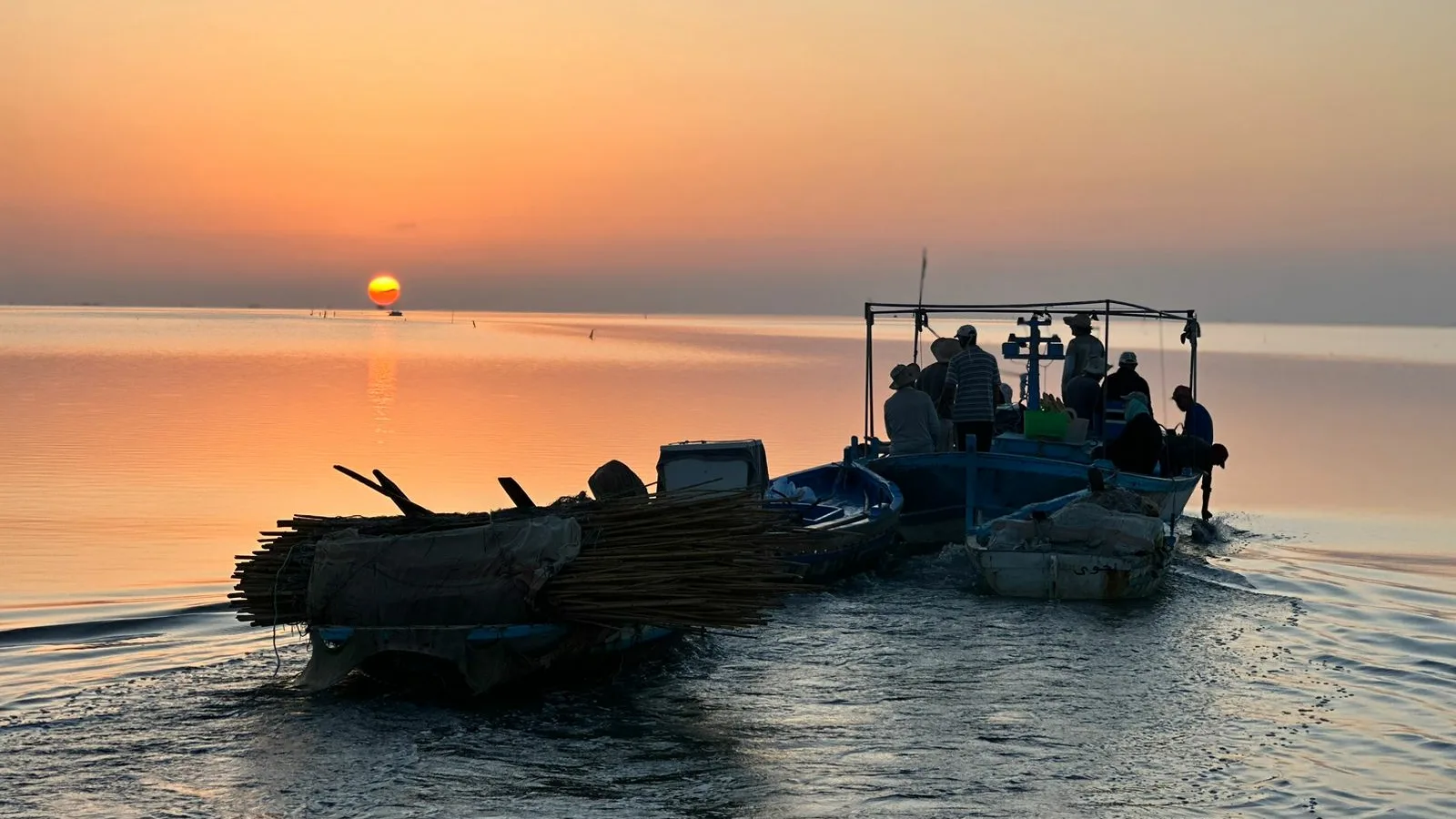
Les Aurores de l’Attaya: Immersion in the Ancestral Art of the Damessa
At dawn, around 5 a.m., in the port of Attaya, it’s time to wake up to the first light of the sun. The sea, glistening with golden reflections, emanates a marine fragrance, while the waves whisper an air of tranquility. The fishermen of the Damessa, remarkable for their colorful baskets and palm hats, converge on their boats.
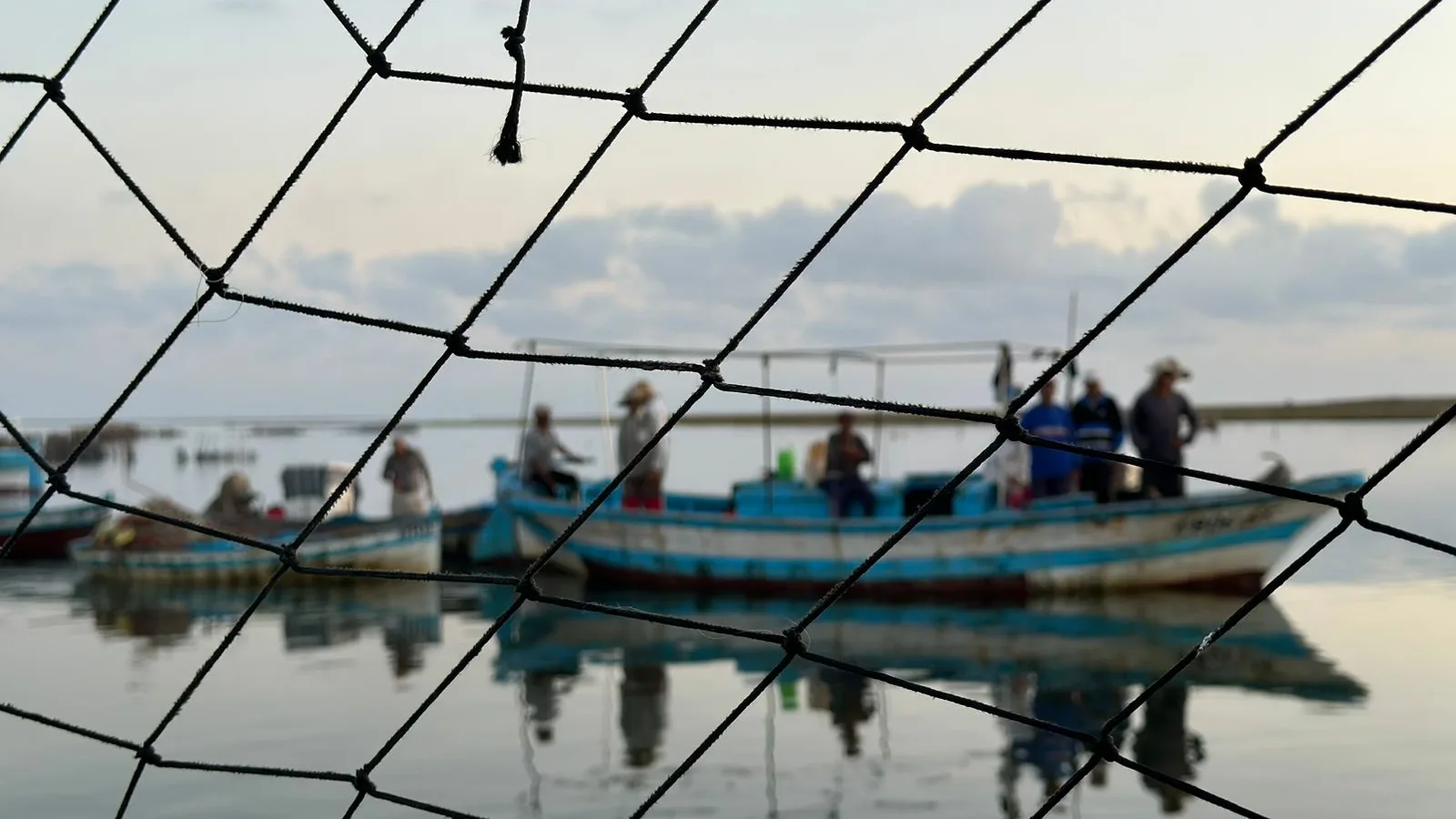
Their main boat, accompanied by three smaller feluccas, pulls away from the shore, taking with it the crew, a close-knit group sharing coffee and stories under the gaze of Raies Abdelfattah Ben Salem Khelif. An Attaya veteran with over fifty years’ experience, he shares his memories with us.
When I was a child, I used to skip school to go fishing with my father. It was a great source of happiness for me. At the age of 15, I gave up my studies to follow my passion. It was my father who taught me damessa fishing. It’s a technique specific to the Attaya region. You can’t find it anywhere else.
Raies Abdelfattah Ben Salem Khelif

The “Raies”, navigating without GPS or compass, uses his instinct and ancestral know-how to find the perfect spot to deploy the Dar, the jumping fish trap typical of this unique fishery – the trap for jumping fish (mugilidae), such as yellow mullet(Milla), jumping mullet(Karchou), hence its name “jumping fishing”. This is where the crew disperse harmoniously into the small boats, and start rowing delicately, just long enough for the “Raies” to identify the location for setting up the ” Dar “, the jumping fish trap.
The art of the Damessa: a symphony of refined collective fishing
As soon as the fishing spot is determined by the Raies, a meticulous choreography is set in motion. According to Rimmel Ben Massoud, Professor of Fisheries Science and a native of Kerkennah, the process begins with the first boat unrolling a vertical, non-fishing net, held in place by floats and sinkers. Simultaneously, a second boat deploys a horizontal net, supported by evenly-spaced reed stems, preparing the ground for the next act.
Once the circle has been formed, a sailor in the third boat enters the scene, beating the water with a large stick to frighten the panicking fish into swimming towards the center. Trapped, they try to jump over the net, ending up caught in the horizontal net.

The atmosphere is transformed. The fishermen, moving through the shallow waters, collect the fish in a ballet of laughter and song, celebrating their harvest before moving on to a new site to begin again. This operation can be repeated up to six times a day.
Madame Ben Massoud emphasizes the complexity and collective nature of this technique: “Damessa fishing requires unfailing mastery and cooperation, with each member playing a key role in this aquatic ballet.”
How to save the Damessa?
In Attaya, the age-old practice of Damessa fishing is in decline. Ms. Benmassoud, a specialist in fisheries science, highlights the reasons for this decline. According to her, “the complexity and seasonality of this traditional method, compared with other more profitable and less demanding coastal fishing techniques, have contributed to its decline. In addition, there is a gradual erosion of know-how, with younger generations abandoning this profession, which is considered arduous”.
There is an urgent need to safeguard this unique heritage. One serious approach would be to createa specific label for sustainable artisanal fisheries, including the Damassa. To achieve this, we need to raise awareness and mobilize key players.
A multifaceted approach is essential to ensure the sustainability of the Damessa fishery. Developing sustainable tourism around this practice would open a unique window on this age-old tradition, while providing economic support to local communities. Partnerships with NGOs and universities would also enable in-depth research and effective strategies for its preservation. Celebrating the Damessa through cultural events and festivals would play a crucial role in raising public awareness, both locally and internationally. Finally, the formation of a development group dedicated to the Damessa, bringing together fishermen, experts, authorities and community members, would be a decisive step towards safeguarding and enhancing this priceless heritage. These joint initiatives would be the first step towards a robust strategy for safeguarding this ancestral tradition, while adapting it to contemporary realities.
This article was developed in collaboration with the Earth Journalism Network Mediterranean Media Initiative.
Copyright © 2023 Blue Tunisia. All rights reserved
Sources:

